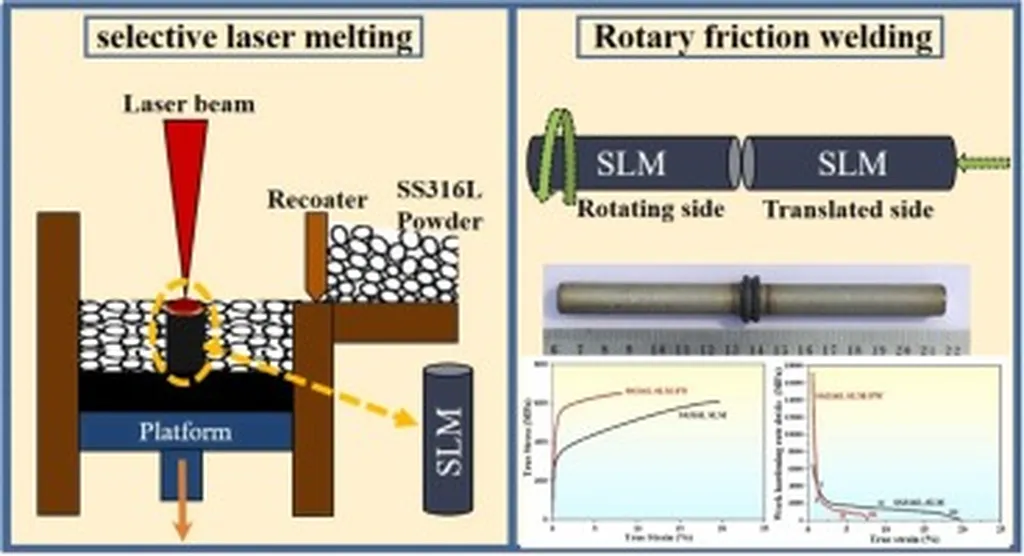In the world of advanced manufacturing, the choice of welding technique can significantly impact the efficiency and quality of production. A recent study published in the *Journal of Advanced Joining Processes* (translated from German as “Journal of Advanced Connection Processes”) sheds light on the nuances of two prominent rotary friction welding methods: inertia friction welding (IFW) and continuous drive friction welding (CDFW). The research, led by Carina Vauderwange from Mercedes-Benz AG and the Institute of Metallurgy at Clausthal University of Technology, offers valuable insights that could reshape industrial practices, particularly in the energy sector.
Vauderwange and her team set out to compare IFW and CDFW using the same friction welding machine and identical energy input of 82.8 kJ. The choice of free-machining steel AISI 1215, known for its banded microstructure, provided a robust test case for analyzing the differences between the two techniques. However, the study revealed that IFW experienced significant energy losses due to internal friction, reducing the effective weld energy to 68 kJ.
“The differences in deformation behavior and weld formation efficiency between IFW and CDFW are striking,” Vauderwange noted. “CDFW exhibits a softer deformation, with principal shortening occurring during the forge phase due to axial force, resulting in large equiaxed inclusions in the weld zone. In contrast, IFW demonstrates sharper deformation, with main shortening in the friction phase, achieving greater total upset.”
These findings highlight the distinct advantages and characteristics of each welding technique. CDFW’s softer deformation and less upset generation could be beneficial for applications requiring precision and minimal material displacement. On the other hand, IFW’s sharper deformation and greater upset might be more suitable for applications where material flow and inclusion dispersion are critical.
The commercial implications of this research are substantial. In the energy sector, where the integrity and efficiency of welded components are paramount, understanding the nuances of these welding techniques can lead to significant improvements in manufacturing processes. For instance, the ability to optimize energy input and minimize material waste could result in cost savings and enhanced product quality.
As the industry moves towards more efficient and sustainable manufacturing practices, the insights from Vauderwange’s study could pave the way for innovative applications of rotary friction welding. By leveraging the unique advantages of IFW and CDFW, manufacturers can achieve greater precision, efficiency, and quality in their production processes.
“This research not only advances our understanding of rotary friction welding but also opens up new possibilities for its application in various industries,” Vauderwange concluded. “The energy sector, in particular, stands to benefit from these insights, as the demand for high-quality, efficient, and sustainable manufacturing solutions continues to grow.”
As the field of advanced joining processes continues to evolve, the work of Vauderwange and her team serves as a testament to the importance of rigorous scientific inquiry in driving industrial innovation. The study, published in the *Journal of Advanced Joining Processes*, provides a valuable resource for professionals seeking to optimize their welding techniques and stay at the forefront of technological advancements.

